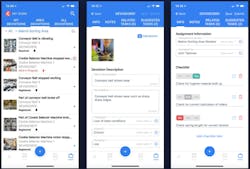At PACK EXPO Connects, ServiceNow highlighted how its partnership with App4Mation’s 4Industry connected worker platform can improve OEE (overall equipment effectiveness) insights and direct targeted response to equipment and operational issues. Luc Raeskin, managing director, said development of the 4Industry software grew out of the company’s work with Heineken to create a platform for shop floor operators and engineers to interface with each other and the digital technologies they work with in the plant—and to connect these operations across all plants to standardize operating procedures globally.
Through their work with Heineken and other industrial companies, Raeskin noted that App4Mation realized that most factories operate at 60% OEE, with the remaining 40% gap caused by equipment failures, problems with equipment setup and adjustments, machine idling and minor stops, use of reduced machine speeds, and process defects. These issues are often caused by day-to-day worker issues such as the time it takes to find the manual to correct the problem, someone walking by a machine and noticing it was stopped, slow receipt of part replacements, or only one person in the plant really knowing how to correctly fix a piece of equipment. These problems are exacerbated by the fact that plant floor workers use multiple different systems to do their work, such as SAP, Excel, manufacturing execution systems, and numerous custom applications.
Built on the ServiceNow platform, 4Industry combines data from equipment and systems to align operations, maintenance, quality, safety, and reporting processes. It does this by integrating with third party systems—such as ERP, MES, and IoT (Internet of Things)—and removing manual, paper-driven workflows to reduce mean time to repair with digital standard operating procedures and assessments.
Using cloud, mobile, IoT, and machine learning technologies, Raeskin said the 4Industry platform delivers operations and equipment analyses for directed improvements, directs quality maintenance based on defect detection and inspections, optimizes planned maintenance by highlighting equipment anomalies, aids early equipment maintenance through targeted scheduling, and provides training and education to workers through access to manuals as well as improving skills by standardizing and sharing best practices.
Though the platform is not a directed OEE tool, Raeskin explained that the platform helps improve OEE by creating a “formal knowledge perspective from workers’ combined productivity perspectives. It’s not that we are fine-tuning machines directly with our technology. Instead, our technology ensures that, if a machine stops, the operator or engineer will have everything they need to get it running again at their fingertips.”
Raeskin said the 4Industry platform has been shown to deliver specific operational improvement results, such as a 17% increase in operator efficiency through the use of mobile, digital workflows; a 23% reduction in equipment breakdowns by delivering mobile, standardized procedures to the right people at the right time; a 20% improvement in safety by delivering standards and protocols directly to workers in hazardous environments; and a 45% improvement in industrial IoT initiatives through its ability to integrate IoT technologies with existing business workflows and determining context for data.
Leaders relevant to this article:


